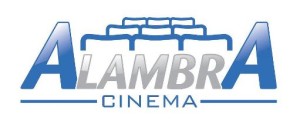Now that you know the meaning of indirect expenses, scroll down for the list and examples of indirect expenses. Because direct costs can be specifically traced to a product, direct costs do not need to be allocated to a product, department, or other cost objects. Items that are not direct costs are pooled and allocated based on cost drivers. When the income statement is revised to only include direct expenses in the cost of goods sold, this is called a contribution margin income statement. The structure of a contribution margin income statement appears in the following exhibit. To understand and study direct expenses, it is important to study the company’s Trading Account.
- However, they may all be different when you deep-dive and understand them thoroughly.
- Shaun Conrad is a Certified Public Accountant and CPA exam expert with a passion for teaching.
- For example, Ford Motor Company (F) manufactures automobiles and trucks.
- Selling expenses do not directly contribute to a company’s production and sales.
Direct vs. Indirect Costs: What’s the Difference?
Also, manufacturers try to eliminate inefficiencies in production processes. Direct expenses, on the other hand, can be traced back to a single department and only benefit that department. Direct expenses is typically used to categorize and allocate expenses between departments; where as, direct costs more broadly allocates expenses to cost objects. The easiest way to tell the difference between direct and indirect costs is by determining whether the cost is specific to a product.
What Are Direct Costs?
On the contrary, indirect cost refers to expenses incurred for the functioning, management, and maintenance of a business. Overheads like showroom rent and manager’s salary are not considered for the computation of unit cost of goods or services. Since most expenses incurred during the year benefit multiple departments, there are usually more indirect expenses than direct.
If you’re preparing a budget for next year, you’ll need to know what you’re currently paying for materials and supplies as well as how much your direct labor costs are. A company must pay salaries to its employees regardless of the production or sale of products or services. To conclude, a company must keep proper track of its direct expenses and indirect expenses for the smooth running of its business.
However, they stay consistent for each output unit and are monitored by the respective department manager. In contrast, it is presumed that the money paid to other employees (not factory workers) is called salaries. This logic leads to wages becoming direct expenses, as opposed to salary expenses becoming indirect expenses.
Utility bills, rental costs, salaries, depreciation, office supplies, and legal charges are a few examples of indirect expenses. These costs can come in form of salaries, rents, wages, transportation costs, loans, overdrafts, utility bills, etc. To monitor these expenses properly, we can segregate them into direct expenses and indirect expenses. Just remember that the key difference between direct expenses instructions for form 9465 and indirect expenses is how they relate to the production or delivery of a specific good or service.
Direct costs do not need to be fixed in nature, as their unit cost may change over time or depending on the quantity being utilized. An example is asset definition and meaning the salary of a supervisor that worked on a single project. This cost may be directly attributed to the project and relates to a fixed dollar amount.
Where should we send your answer?
Keep reading to learn about direct and indirect expenses, their lists, examples and differences. Just like direct expenses, indirect expenses can also be different for diverse organisations. These are usually shared costs among different departments/segments within the firm. Indirect expenses are necessary to keep the business up and running, but they can’t be directly related to the cost of the core revenue-generating products or services. For example, imagine you open an Etsy shop selling homemade goods such as candles. In this instance, the cost of supplies such as containers, wax, a hot plate, wicks, or fragrances would be considered direct expenses.
Direct expenses are a major component of a business or company’s financial metric as it helps them to keep track of their spending. The management assesses these expenses to set the cost of a product or service. Indirect expenses are not directly related to the core business operations. Direct expenses are shown on the debit side of a trading account because costs related to the production, procurement, buying and selling of goods/services should appear in this account. In addition, you’ll also need to budget for other operating expenses such as rent, insurance, taxes, and office supplies.
If assigning a cost to a specific object or business activity is easy, it’s likely a direct expense, while indirect expenses are more general. The output cost object determines the per-unit cost of production of each product or service. Overall production cost is distributed among departments, projects, and processes—operation cost objects. Thus, we can say that the company’s direct expenses can be allocated to each unit of the cost object.
Direct expenses become part of the cost of the goods manufactured or purchased. We’re firm believers in the Golden Rule, which is why editorial opinions are ours alone and have not been previously reviewed, approved, or endorsed by included advertisers. The Ascent, a Motley Fool service, does not cover all offers on the market.
Rent for a factory, for example, could be tied directly to the production facility. However, companies can sometimes tie fixed costs to the units produced in a particular facility. They can either be directly or indirectly related to the core business operations. The type of expense and timing at which it is incurred by the business frames the key points of difference between direct and indirect expenses. Unlike direct costs, indirect costs cannot be tied back to a specific product or productions.

